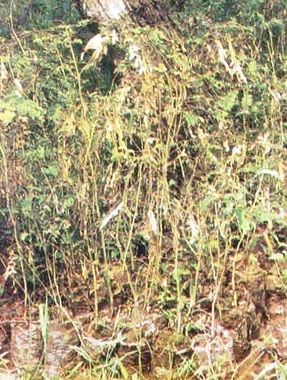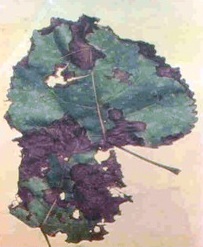This disease has been reported in nurseries and vegetative multiplication areas of tree species viz., Albizia, Dalbergia, Eucalyptus, Gmelina, Melia, Neem, etc.
The disease appears in the nursery after the regular monsoon rains and due to improper maintenance of nursery stock.
Some of the important forestry species such as Albizia, Dalbergia, Eucalyptus, Gmelina, Melia, Neem etc are affected by this disease.
This disease is caused by Rhizoctonia solani.
1. Disease first appears on the leaves close to the ground, as water soaked silvery grey blotches.
2. Development of grayish brown blotches which increase in size with the advancing fungal hyphae and ultimately engulf the entire leaf blade.
3. The infected adjoining leaves get joined together by the fungal hyphae as if caught in a spider’s web, hence the name web blight.
4. The leaflets or the entire pinnae become detached prematurely.
5. The disease spreads through contact of the overlapping foliage.
The disease can be managed by an integrated approach involving measures such as sanitation, cultural practices and use of fungicides. (a) Sanitary measures recommended are disposal of leaf litter by burning and segregation of diseased seedlings soon after such seedlings are spotted. This will help in preventing lateral spread of the disease through contact of the overlapping foliage of the adjoining seedlings thereby minimizing the disease incidence. (b) Cultural practices include raising of seedlings in poly bags instead of beds; keeping seedlings in lots of 250-300 seedlings instead of 1000 seedlings in nurseries. (c) Application of Bayleton (0.1% a.i.) fungicide as foliar spray is found very effective in controlling the disease.

Web blight disease on Poplar




